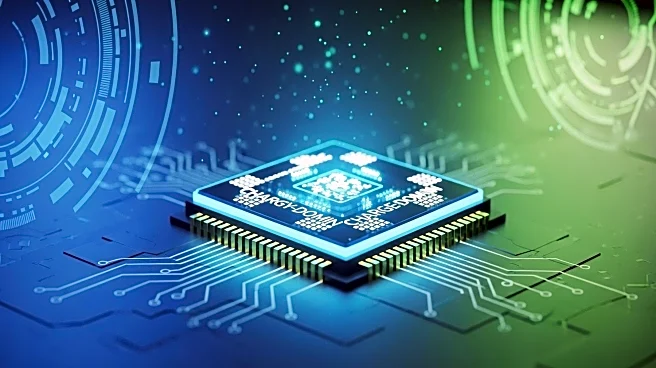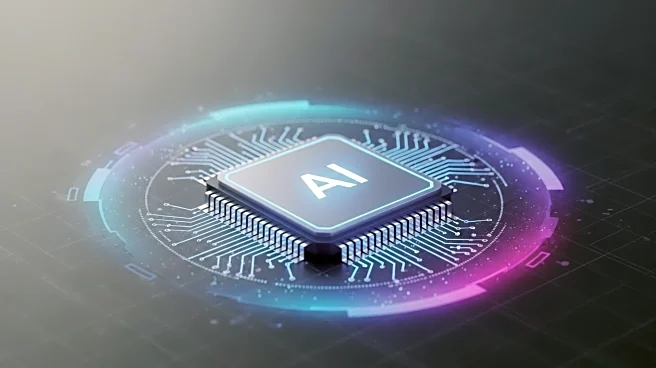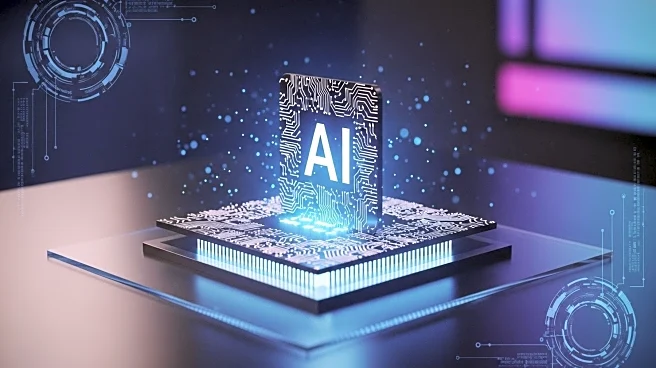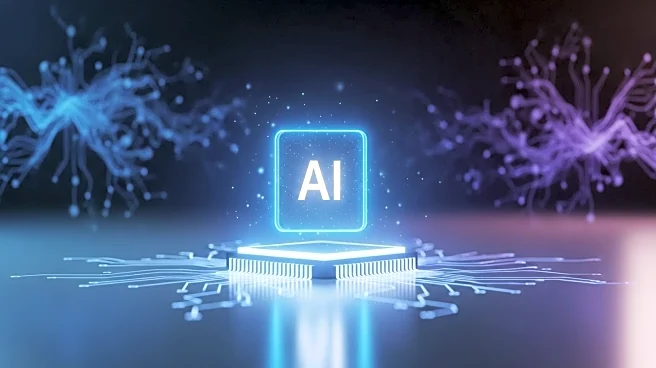What is the story about?
What's Happening?
A recent article discusses the development of charge-domain content addressable memory (CAM) based on ferroelectric capacitive memory. This technology aims to enhance energy efficiency and reliability in one-shot learning applications. The CAM design utilizes capacitive memory devices, or memcapacitors, to store data with programmable capacitance. The inversion-type ferroelectric capacitive memory (FCM) device features a metal-ferroelectric-semiconductor structure, which allows for fast ferroelectric switching and non-volatile data storage. The CAM cell operates by modulating capacitance states through ferroelectric polarization, enabling high capacitance ratios and long-term data retention. The study demonstrates the CAM's ability to perform charge-domain search operations, which can be extended to array-level computations for high-dimensional data processing.
Why It's Important?
The development of charge-domain CAM technology is significant for advancing energy-efficient computing solutions. By leveraging ferroelectric capacitive memory, this approach offers lower hardware costs and improved sensing margins compared to current-domain CAM arrays. The high linearity and time-independent features simplify the sensing process, making it suitable for applications requiring accurate high-dimensional computations. This technology could benefit industries focused on artificial intelligence and machine learning, where efficient data processing and storage are crucial. The CAM's ability to perform reliable one-shot learning tasks with minimal energy consumption positions it as a promising candidate for future computing architectures.
What's Next?
The article suggests further exploration of the CAM's capabilities in parallel high-dimensional computations. The technology's scalability and variation immunity make it suitable for longer search vectors and more complex in-memory search applications. Future research may focus on optimizing the sensing circuits and fabrication processes to reduce error rates and enhance computational accuracy. Additionally, integrating advanced capacitor structures could improve device area efficiency and support larger data sets. The potential for implementing energy recovery techniques and lower voltage operations could further reduce energy consumption, making the CAM technology more viable for widespread adoption.
Beyond the Headlines
The charge-domain CAM technology presents ethical and cultural implications in the realm of data processing and artificial intelligence. As computing systems become more efficient and capable of handling complex tasks, concerns about data privacy and security may arise. The ability to perform high-dimensional computations with minimal energy consumption could lead to advancements in AI applications, impacting various sectors such as healthcare, finance, and autonomous systems. The technology's scalability and efficiency may drive shifts in computing paradigms, emphasizing the need for responsible innovation and regulation.
AI Generated Content
Do you find this article useful?











